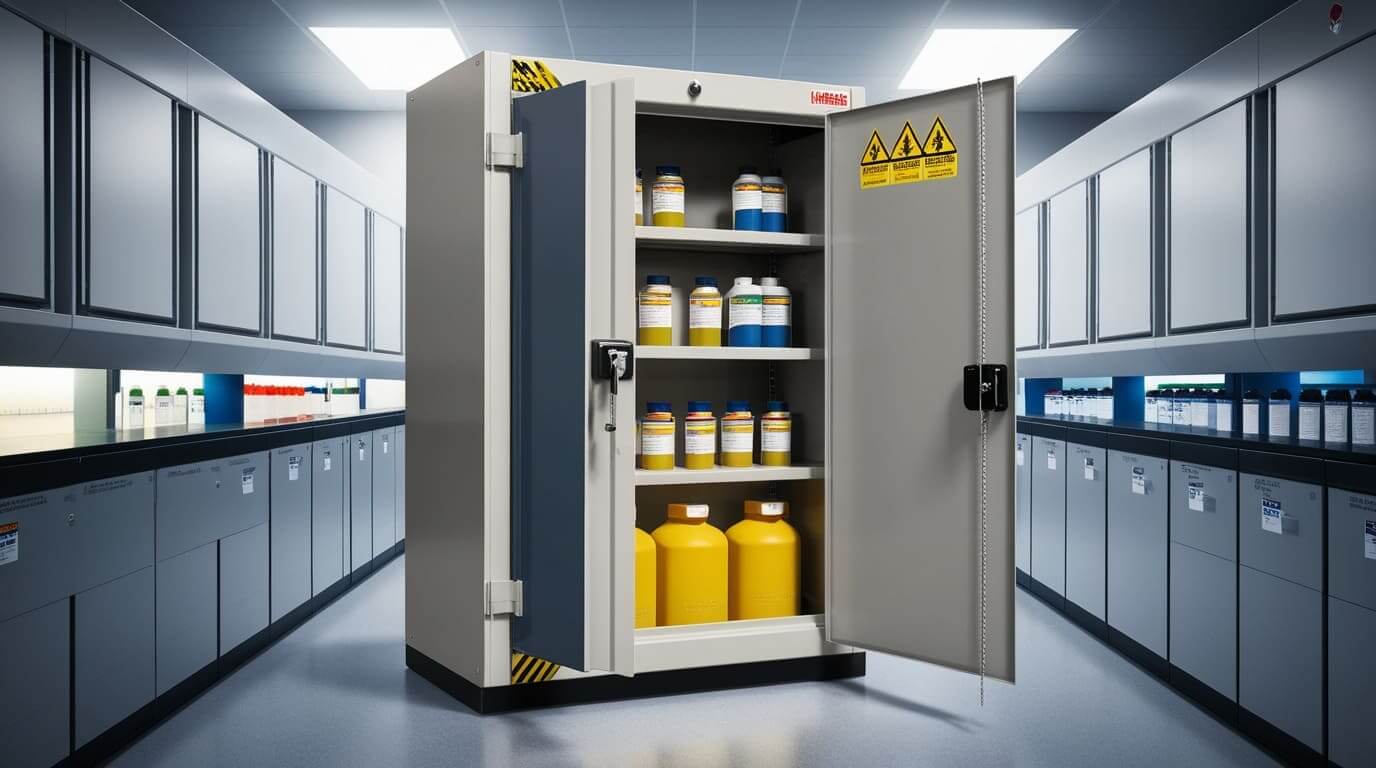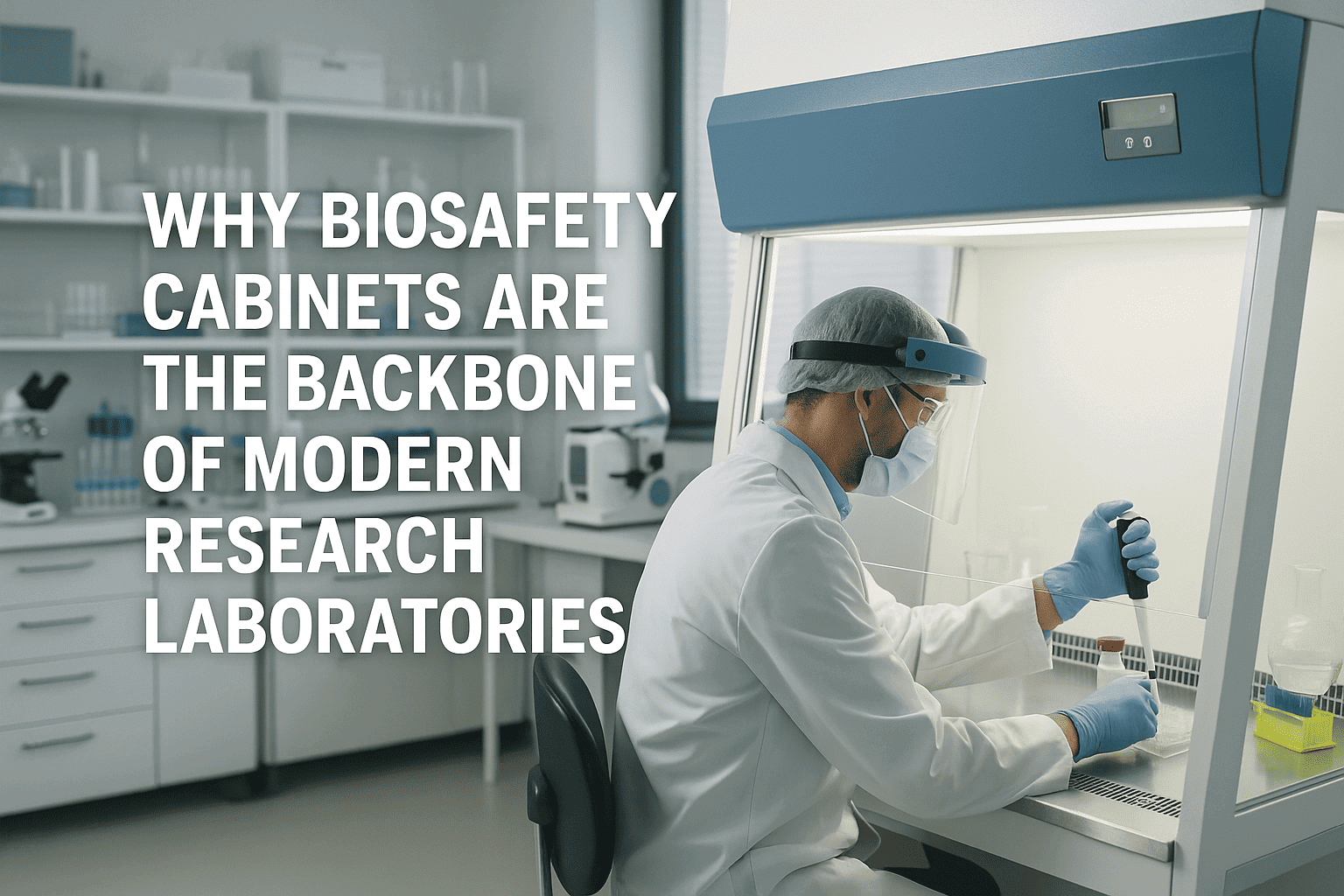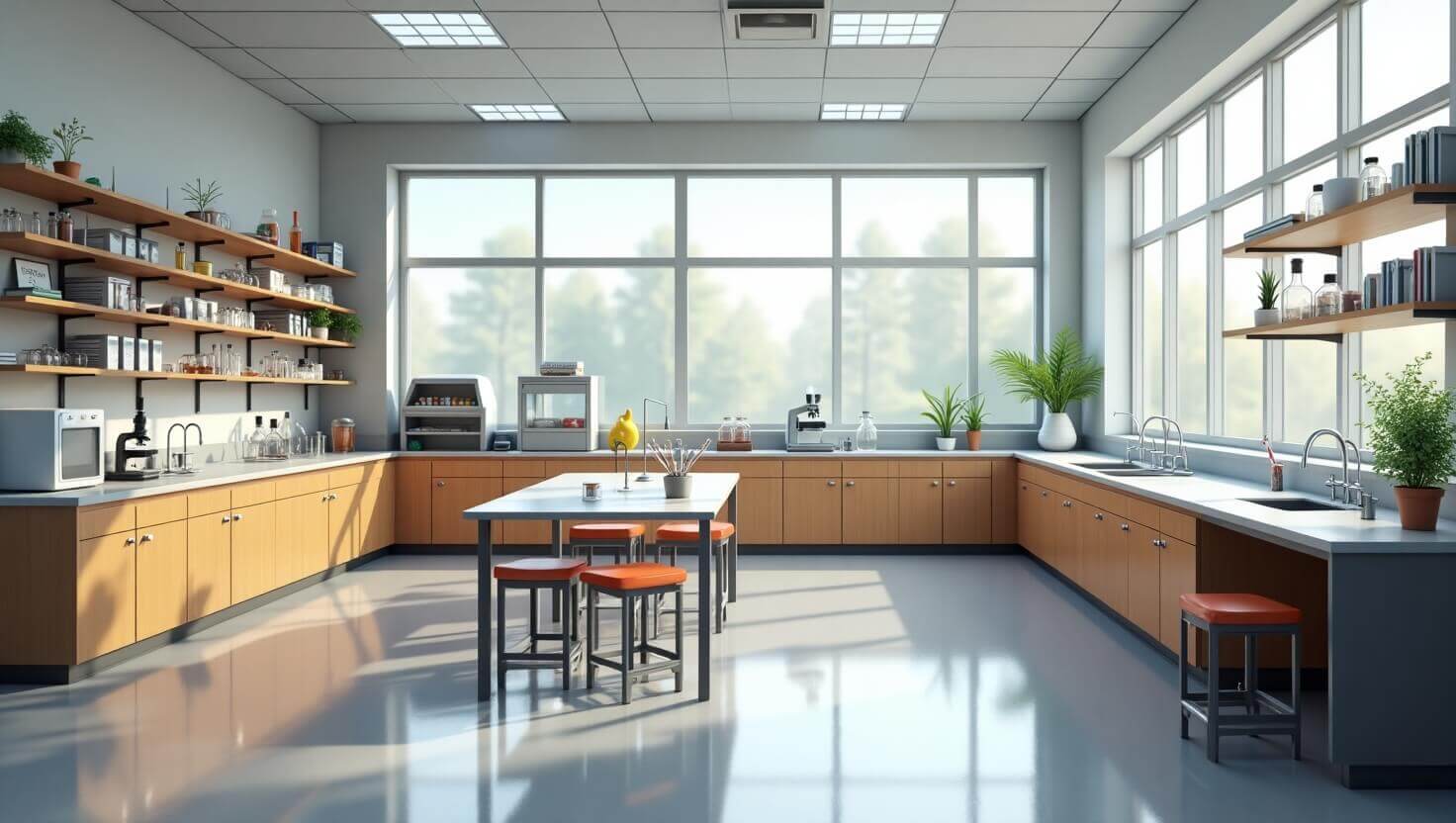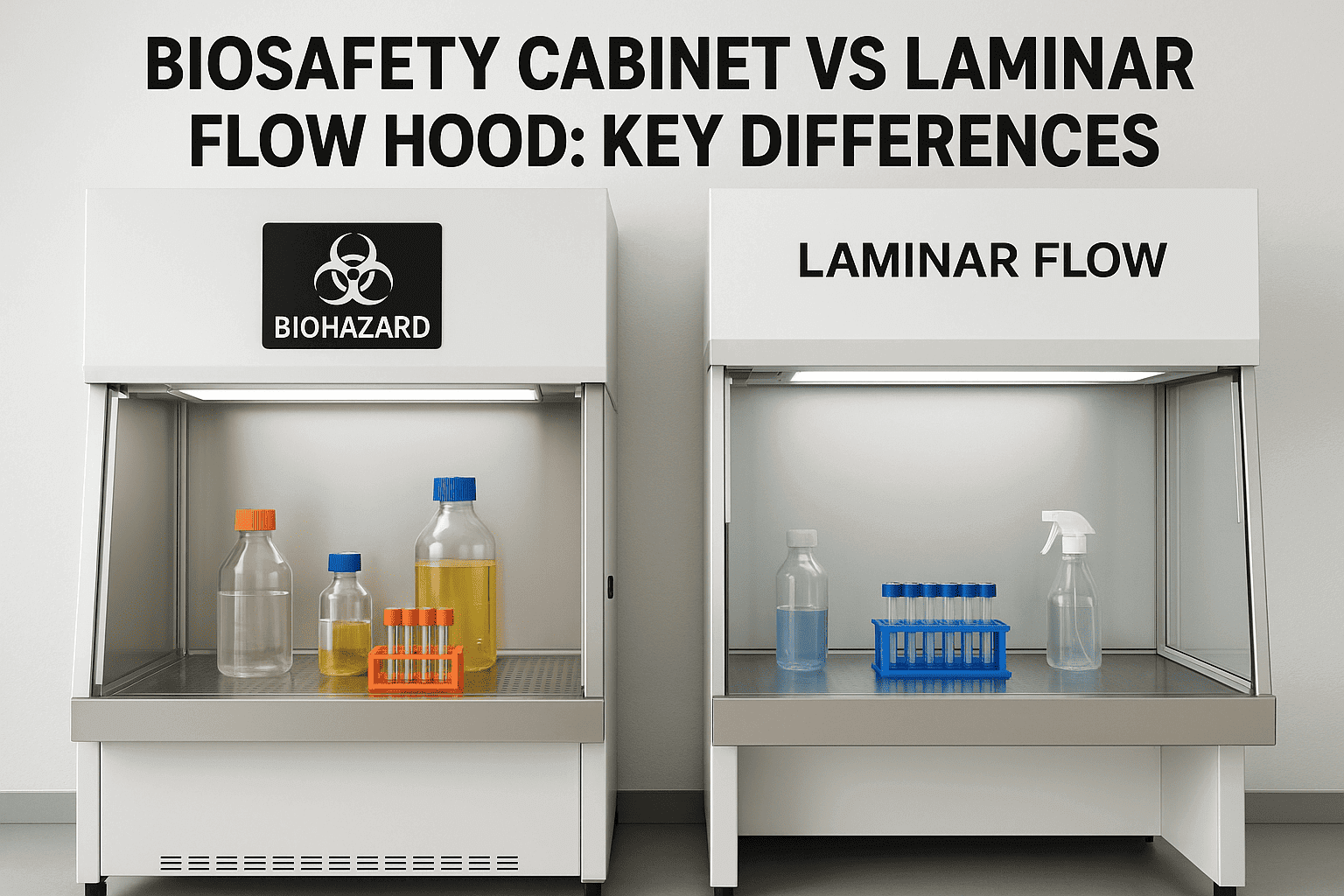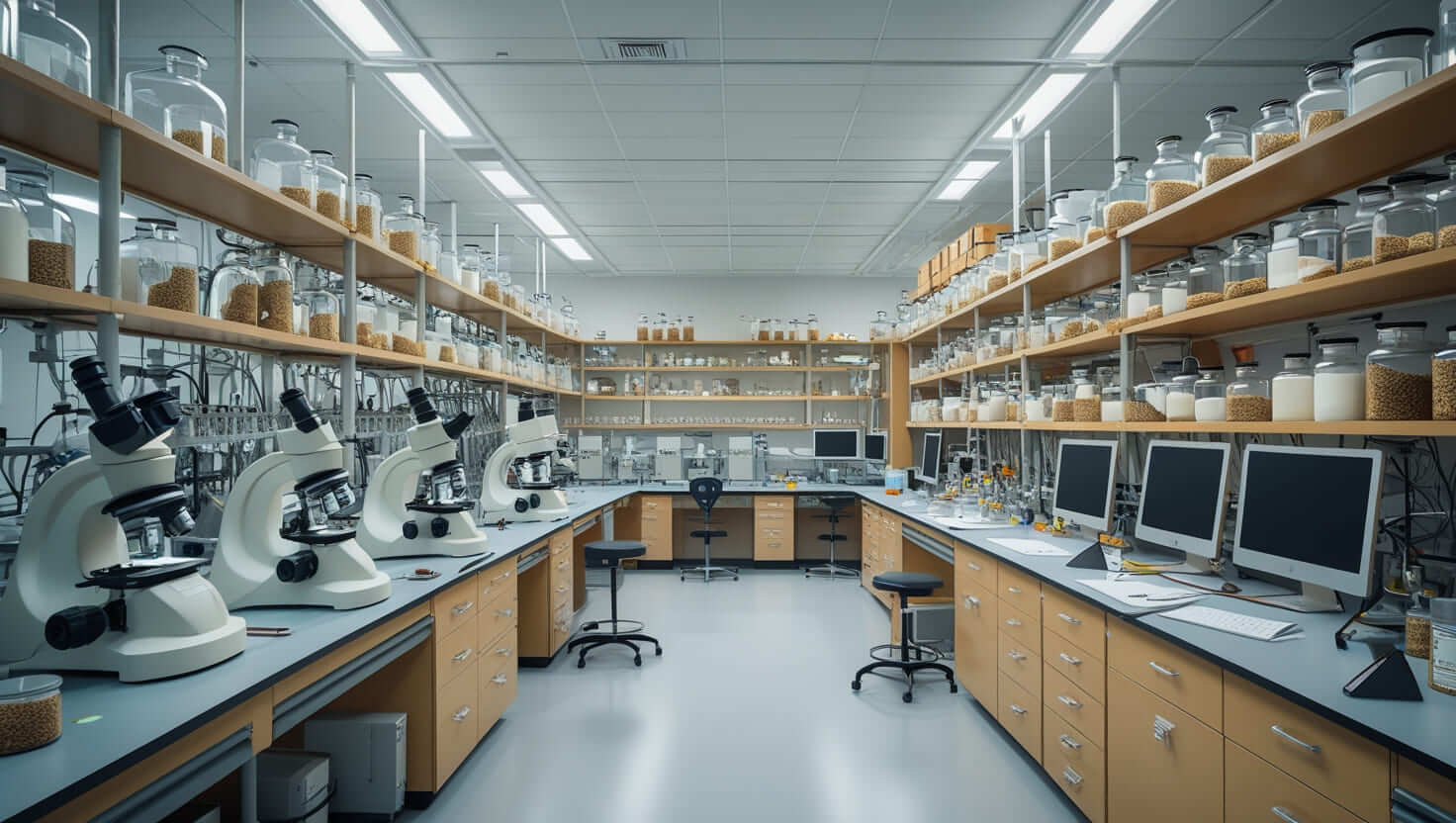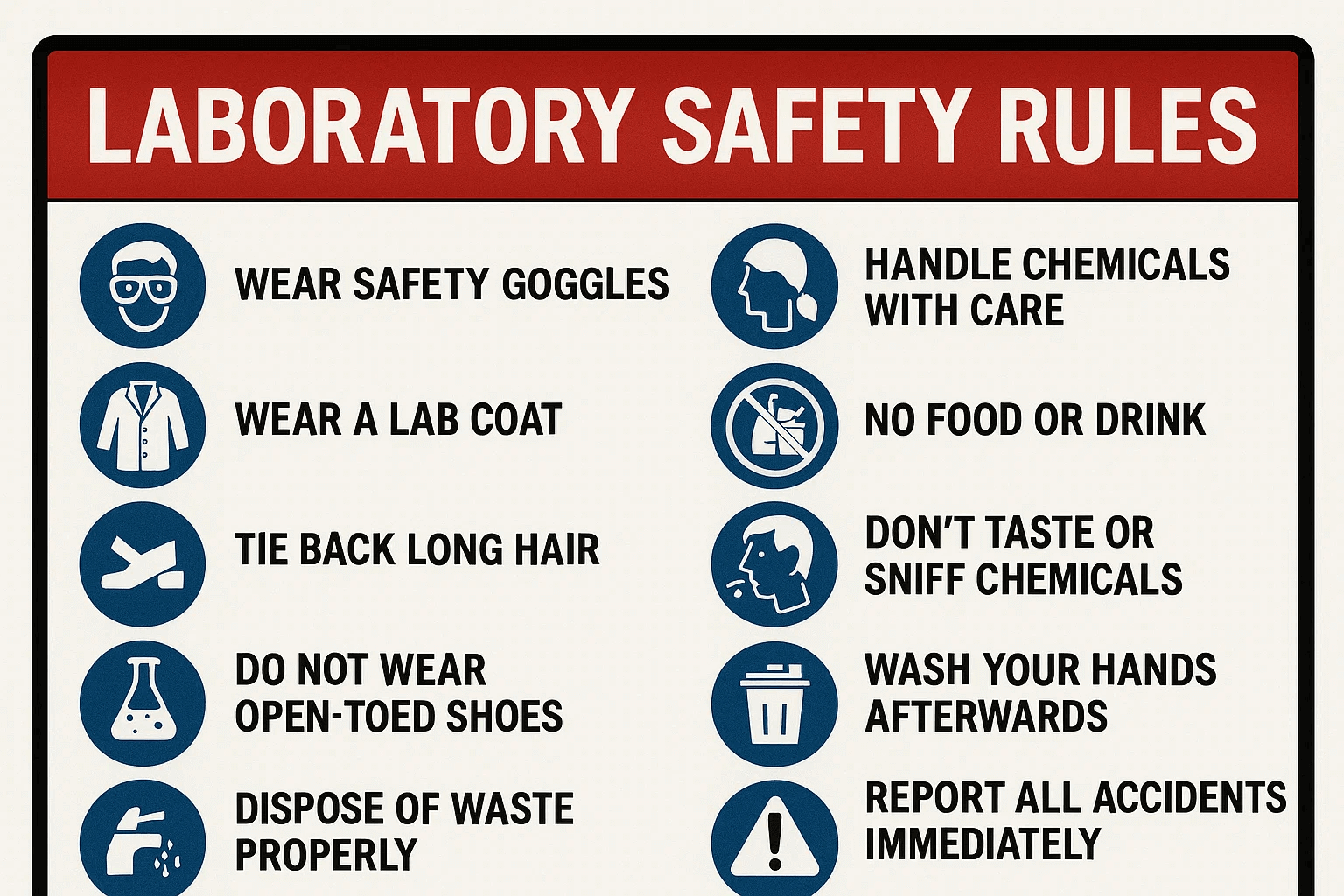
Working in a laboratory environment presents unique challenges and potential hazards. From chemical exposure to equipment malfunctions, researchers face various risks that require careful attention to safety protocols. Understanding and implementing proper lab safety rules protects both personnel and valuable research.
Whether you’re conducting experiments in an academic setting, industrial facility, or medical research center, these fundamental laboratory safety rules will help create a secure working environment for everyone involved.
1- Wear Proper Personal Protective Equipment
Personal protective equipment serves as your first line of defense against laboratory hazards. Essential gear includes lab coats, safety goggles, and appropriate gloves for your specific work. Depending on your research, you may need additional protection such as face shields or chemical-resistant aprons.
Choose PPE based on the materials you’re handling and potential exposure risks. Replace damaged equipment immediately, as compromised protection can be worse than no protection at all.
2- Know Your Emergency Equipment Locations
Familiarize yourself with the location and operation of all emergency equipment before beginning any work. This includes fire extinguishers, emergency showers, eyewash stations, and first aid supplies. During an emergency, quick access to these resources can prevent minor incidents from becoming serious injuries.
Practice using emergency equipment during training sessions so you can respond confidently under pressure.
3- Maintain Strict Hygiene Standards
Never eat, drink, or apply cosmetics within the laboratory workspace. These activities increase contamination risks and potential exposure to harmful substances. Even sealed food containers can become contaminated through airborne particles or surface contact.
Designate specific areas outside the lab for meals and personal care activities to maintain clear boundaries between work and personal spaces.
4- Implement Proper Chemical Management
Accurate labeling is crucial for chemical safety. Every container must display the substance name, concentration, hazard classification, and date of preparation or receipt. Store chemicals according to compatibility charts to prevent dangerous reactions.
Maintain an updated inventory of all chemicals, including their locations and expiration dates. This systematic approach prevents accidents and ensures regulatory compliance.
5- Follow Approved Protocols Only
Conduct experiments only under proper supervision and with approved procedures. Unauthorized modifications or unsupervised work can lead to unexpected reactions and serious safety violations.
Always discuss proposed changes with supervisors before implementation, even for seemingly minor adjustments to established protocols.
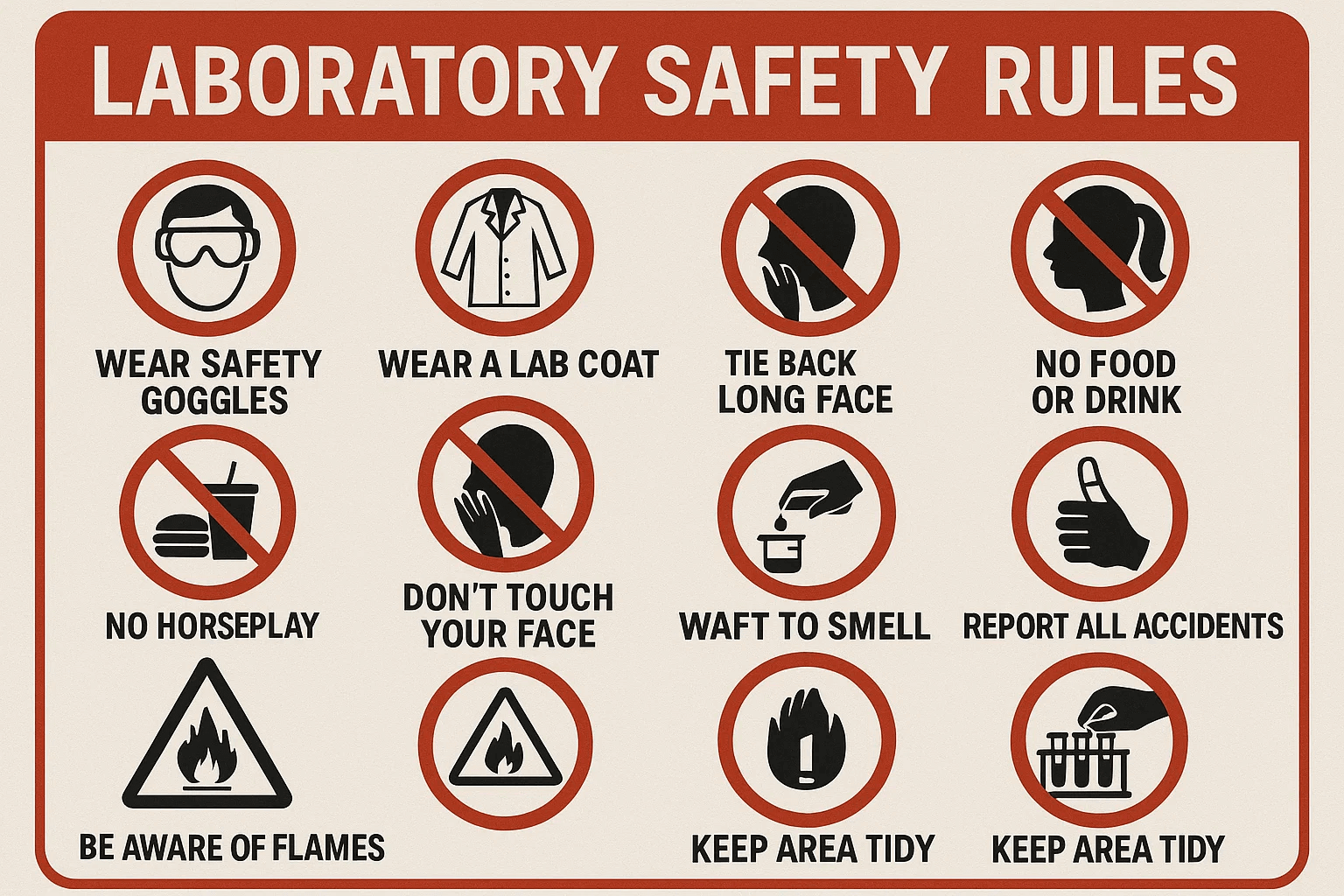
6- Handle Waste Disposal Responsibly
Different waste types require specific disposal methods. Chemical waste, biological materials, and sharp objects each have designated collection systems. Improper disposal creates environmental hazards and exposes personnel to unnecessary risks.
Consult waste management guidelines for your facility and segregate materials according to established categories. When in doubt, ask your safety officer for clarification.
7- Organize Your Workspace Effectively
A clean, organized workspace reduces accident risks and improves efficiency. Keep work surfaces clear of unnecessary items and ensure safety equipment remains easily accessible.
Implement a “clean as you go” policy to prevent accumulation of spills, debris, or misplaced equipment that could create hazards.
8- Stay Alert and Focused
Laboratory work demands your full attention. Avoid distractions such as personal phone calls, social media, or unrelated conversations during experiments.
Mental fatigue increases error rates, so take regular breaks and avoid working when tired or stressed. Your safety and research quality both benefit from maintaining focus.
9- Study Material Safety Information
Before handling any chemical or biological material, review its safety data sheet thoroughly. These documents provide critical information about hazards, safe handling procedures, and emergency response measures.
Keep safety data sheets easily accessible in your work area and refer to them whenever questions arise about proper handling or storage procedures.
10- Report All Incidents Promptly
Document and report every accident, injury, or near-miss event, regardless of severity. These reports help identify potential hazards and improve safety protocols for everyone.
Prompt reporting also ensures proper medical attention when needed and helps maintain accurate records for regulatory compliance. Following these safety rules in the laboratory creates a culture of responsibility and awareness among all team members.
Trusted Lab Setup: labcreator
Creating a safe and efficient laboratory starts with choosing the right equipment and layout. That’s why labcreator is considered the best lab setup and lab equipment provider in India. Their high-quality products, customizable solutions, and commitment to safety make them a reliable partner for educational institutions, research facilities, and industrial laboratories across the country.
From fume hoods and lab benches to chemical storage units and safety stations, labcreator offers comprehensive solutions to help laboratories meet national and international safety standards. Their expertise ensures that labs are designed not only for functionality but also with the highest regard for safety and compliance.
Conclusion
Implementing these essential laboratory safety rules is an ongoing responsibility that requires constant attention and commitment. By following these practices consistently, you create a work environment that protects personnel while supporting high-quality research outcomes.
Remember that safety protocols evolve with new technologies and discoveries. Stay informed about updates to safety standards in your field and participate in regular training to maintain your knowledge and skills.


